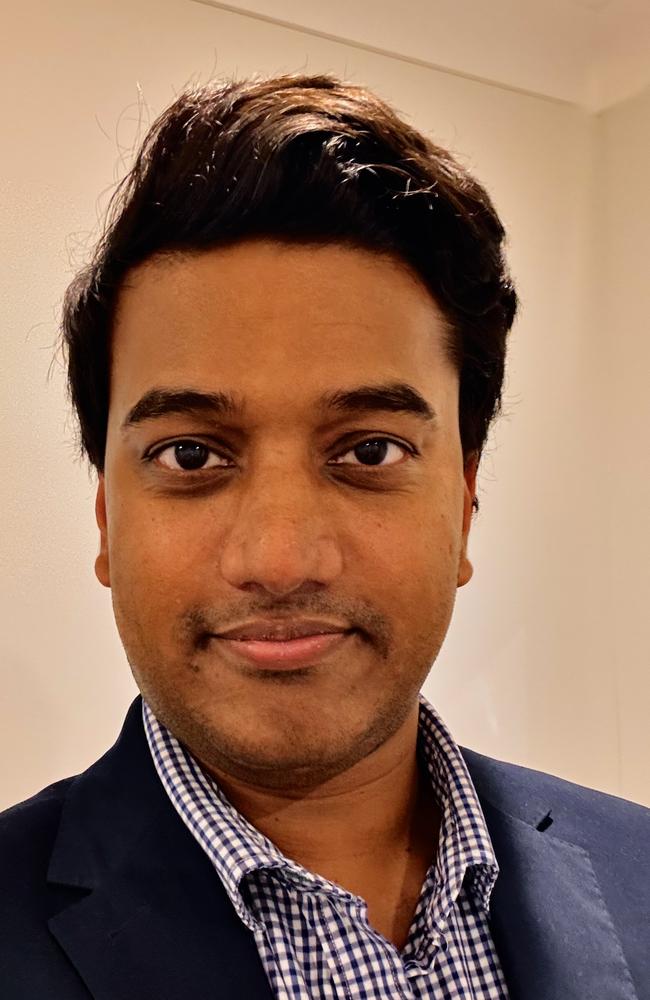Raja Chaganti: Oncologist on treating cancer and toll of side effects
Cancer is generally more prevalent in older people. As the population ages in Australia it poses the question, are the side effects of treating some people for cancer worth it?
Cancer
Don't miss out on the headlines from Cancer. Followed categories will be added to My News.
Cancer is generally a disease more prevalent in older people. As the population ages within Australia, we are seeing greater rates of malignancy.
In fact, there appears to be an increase in new diagnoses of malignancy that outstrips estimates based on the ageing population alone, suggesting cancer is unfortunately becoming more common for multiple reasons.
Cancer treatments are tough.
They can come with significant side effects and impact daily quality of life.
While ongoing research has improved dosing plans and supportive care to limit side effects from chemotherapy, and newer more targeted treatments such as immunotherapies or antibody-directed therapies generally have lower rates of side effects, the impact of cancer treatment on quality of life remains significant.
We have long known that older people tolerate aggressive anti-cancer therapy worse than their younger counterparts. They have higher rates of side effects, hospital admission and more frequently require dose reductions or interruptions.
Older people also tend to have more concurrent health problems that may mean they have less reserve to deal with side effects from treatment.
All of this raises the question of whether we are in fact helping or harming our older patients by giving them treatment.
When new cancer treatments are being trialled, we often end up with a slightly skewed view of their tolerance.
Rightly, the major focus of the trials tends to be on outcomes of improving survival or preventing cancer growth. Trials will always report side effects, but the populations in studies are becoming less representative of who we see in clinic day to day. Most trials will enrol relatively young, fit participants.
It would be typical to see a median age of around 65, and assessment of fitness is part of the inclusion/exclusion criteria to participate in a trial.

The median age seen in clinical practice is higher, and the average fitness of patients is lower. Thus, the patients in the real world may tolerate treatment more poorly than the trial data would suggest.
However, if the treatment works, are the side effects worth it?
There is no single answer to this question that will apply to everyone, and we face it commonly in clinical practice.
Should we offer all treatments to every patient, or should we suggest some patients have less intensive treatment, or even not have treatment altogether?
When it comes to making these suggestions based on fitness, the answer is relatively clear. You can assess the person in front of you at the current time and get a sense of their function. Someone who is bedbound and dependent for all care will not do well with chemotherapy, which will likely only serve to increase suffering at the end of their life.
It becomes less clear when we consider age in isolation. Should there be a cut-off age for cancer treatment? And if so, what should this age be? A fit 85-year-old may be better able to tolerate treatment than someone 10 years younger who has multiple illnesses. Many Oncologists would agree that age is a consideration but should not be the sole driver of treatment decisions.
Additionally, newer treatments are becoming better tolerated and more widely used, particularly in the older population. As our treatments get better, the decision to withhold treatment becomes more difficult to make. Someone may choose not to pursue active treatment if it was only going to add a few months to the length their life at the expense of side effects. Would they make the same decision if the treatment may add 5 years to their life? It is important to remember that we cannot with certainty predict individual outcomes to a treatment.

We use median survival as an outcome measure, so 50 per cent of people will do better than this figure and 50 per cent will do worse.
Some people may have many side effects, while others may have few to none.
In modern Oncology, decision making around pursuing treatment for an older population is nuanced, and it is likely to become more so in the future.
This is a trend that will be seen not just in oncology, but across many medical specialties as the population ages.
As we move forward into the era of more personalised and targeted treatments, I believe that the deciding factor for receiving aggressive treatment should not be age, but fitness and patient preference.
Dr Raja Chaganti is a medical oncologist, while his wife Dr Kavya Chaganti is a GP-obstetrician. They are also parents who are based in Sydney and have the popular Instagram @twoaussiedoctors.
More Coverage
Originally published as Raja Chaganti: Oncologist on treating cancer and toll of side effects




